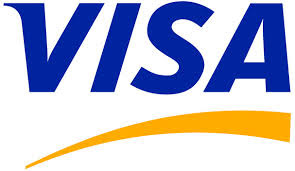American Express executives discussed the possibility of launching a travel
charge card as early as 1946, but it was not until
Diners Club launched their card in March 1950 that American Express began seriously to consider the possibility. At the end of 1957, American Express CEO
Ralph Reed decided to get into the card business, and by the launch date of October 1, 1958 public interest had become so significant that they issued 250,000 cards prior to the official launch date. The card was launched with an annual fee of $6, $1 higher than Diners Club, to be seen as a premium product. The first cards were paper, with the account number and cardmember's name typed. It was not until 1959 that American Express began issuing embossed
ISO/IEC 7810 plastic cards, an industry first.
[20]
In 1966, American Express introduced the Gold Card and in 1984 the Platinum Card, clearly defining different
market segmentswithin its own business, a practice that has proliferated across a broad array of industries. The Platinum Card was billed as super-exclusive and had a $250 annual fee (it is currently $450). It was offered by invitation only to American Express customers with at least 2 years of tenure, significant spending, and excellent payment history; it is now open to applications on request.
In 1987, American Express introduced the Optima card, their first credit card product. Previously, all American Express cards had to be paid in full each month, but Optima allowed customers to carry a balance (the charge cards also now allow extended payment options on qualifying charges based on credit availability). Although American Express no longer accepts applications for the Optima brand of cards, since July 13, 2009, Optima cards are still listed on the American Express website, as a reference to existing members only. According to American Express, Optima accounts were not converted or closed. However, Blue from American Express has prevailed as the replacement for the original Optima style of credit card. Blue includes multiple benefits free of charge, unlike Optima, including the Membership Rewards program. In October 2012, The Consumer Financial Protection Bureau (CFPB) announced an enforcement action with orders requiring three American Express subsidiaries to refund an estimated $85 million to approximately 250,000 customers for illegal card practices. This action was the result of a multi-part federal investigation which found that at every stage of the consumer experience, from marketing to enrollment to payment to debt collection, American Express violated consumer protection laws. American Express sent letters to some previous customers: "We invite you to apply for the Optima Card from American Express. This opportunity is in connection with a settlement solicitation, which did not clearly disclose that a settlement could prevent you from being approved for a new account with us in the future. This is in response to an enforcement action by the Federal Deposit Insurance Corporation and Consumer Financial Protection Bureau regarding this issue. Your attached application will be approved unless we determine that you do not have the financial capacity to make the minimum payment on this new Optima Card account, or we receive the application after 04/25/2013."
In April 1992, American Express spun off its subsidiary,
First Data Corp., in an IPO. Then, in October 1996, the company distributed the remaining majority of its holdings in First Data Corp., reducing its ownership to less than 5%.
In 1994, the Optima True Grace card was introduced. The card was unique in that it offered a
grace period on all purchases whether a balance was carried on the card or not (as opposed to traditional revolving credit cards which charge interest on new purchases if so much as $1 was carried over). The card was discontinued a few years later; the now discontinued One from American Express card offered a similar feature called "Interest Protection."

















